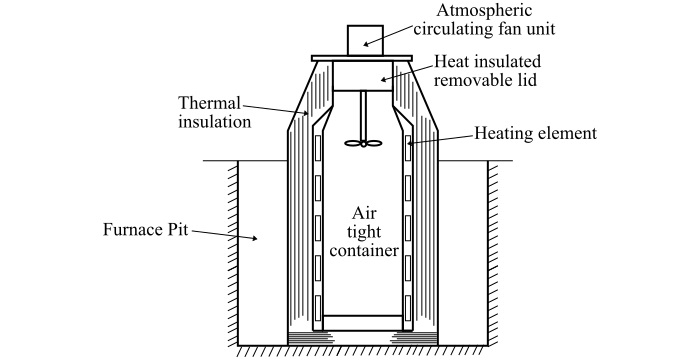
 Data Structure
Data Structure Networking
Networking RDBMS
RDBMS Operating System
Operating System Java
Java MS Excel
MS Excel iOS
iOS HTML
HTML CSS
CSS Android
Android Python
Python C Programming
C Programming C++
C++ C#
C# MongoDB
MongoDB MySQL
MySQL Javascript
Javascript PHP
PHP
- Selected Reading
- UPSC IAS Exams Notes
- Developer's Best Practices
- Questions and Answers
- Effective Resume Writing
- HR Interview Questions
- Computer Glossary
- Who is Who
Electric Resistance Furnaces or Ovens: Types & Applications
Electric Resistance Furnace
The resistance furnaces or ovens are the insulated closed chambers with a provision for ventilation. The resistance furnaces or ovens are used for heat treatment of metals, commercial or domestic heating, pottery work, etc.
The different elements of the furnace can be energies from DC or AC supply of the rated voltage. The star-delta formation provides a wide variation of the temperature.
In case of batch type resistance furnace, the charge is inserted in the furnace. The figure shows a typical batch type resistance furnace. Here, it is heated for a specific time at a specific temperature and then removed. At the temperature below 750 °C, the main transfer of heat is through convection, which is made possible with the help of specially designed circulating fan unit as shown in the figure.

After inserting the charge, to be heated, inside the furnace and sealing the furnace with required atmosphere inside it, the heating circuit is energized. The furnace is equipped with an automatic temperature control making use of thermocouple inside the furnace monitors the temperature of the furnace.
For example, if the temperature inside the furnace has to be maintained say at 700 °C, then the heating element should be switched OFF nearly at 650 °C, the temperature will gradually raise to 700 °C with intermittent switching ON and OFF and hence, the temperature can be maintained nearly 700 °C. Finally, the charge has to be removed from the furnace after heating for further processing.
In some other resistance furnaces, indirect resistance heating method is used. Here, the charge, to be heated, comes into the heating chamber on a conveyor belt and goes out gradually after specified heating.
While drying the painted surface of equipment such as sewing machine, cycle and boxes of electronic equipment, the painted surfaces move through the stationary heating chamber. However, in some other types resistance heating furnaces the whole body of the furnace can be rotated in any direction for exposing the charge, an example of such furnace is rocking-resistor furnace.
In case of rocking-resistor furnace, the whole body of the furnace is rocked clockwise and counter-clockwise for exposing the charge, to be heated, to a desired atmosphere. An application of rocking-resistor furnace is in the manufacturing of carbon film resistance, used in electronic circuits. In this case, the ceramic pieces to be coated with carbon are heated to a given temperature inside the evaluated tubular shell. Then, the atmosphere is filled with the carbon fumes and the furnace is rocked so that a uniform layer of carbon coating appears on each piece. The furnace is then switched OFF and the pieces of carbon film resistors are removed from the furnace for further processing.
Types of Resistance Furnaces
The main types of resistance furnaces are as follows −
Salt Bath Furnace
Rocking Resistor Furnace
Infrared or Radiant Heating Furnace
Air-Circulating or Convection Type Furnace
Applications of Resistance Furnaces
The resistance furnaces and ovens are used for the following applications −
Commercial and domestic cooking
Drying and baking pottery
To stove the enamelled ware
Heat treatment of metals such as hardening, annealing, etc.

